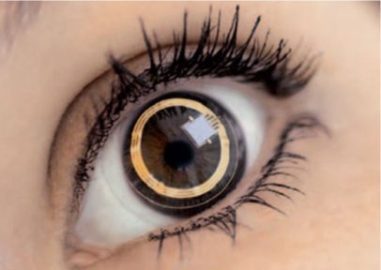Do Smart Contact Lenses Really Improve Upon the Capabilities Of Their Traditional Counterparts?

When it comes to vision correction, most people usually think of prescription eyeglasses. However, contact lenses are also a particularly popular option. One in every six Americans wears them—over 45 million people. There are plenty of reasons these individuals choose contacts over glasses. They don’t distort your vision, aren’t a hassle to use during physical activities, and don’t fog up in cold and humid conditions. Many also find that they have an aesthetic appeal: unless you’re wearing colored contacts, most people can’t tell you’re using any sort of visual aid.
The demand for contacts may rise even further now that manufacturers are finding ways to integrate technology into them. Just like how smart glasses provide both vision correction and additional features like calling, messaging, and taking photos and videos, smart contact lenses aim to help wearers do more with these corrective aids. But are they really better than their traditional counterparts? This piece will compare the two to find out.
What Do Contacts Usually Do?
All contacts are thin, curved disks that go directly on your eye’s tear film, where they bend light and properly focus it on your retina to provide clearer vision. However, you can buy contact lenses that use different shapes, sizes, and materials depending on your specific needs and preferences. You can get contacts that can be disposed of daily or monthly, toric lenses designed to correct astigmatism, and even types that retain more moisture—like the Dailies® AquaComfort Plus®—if you want to avoid the dry eyes common among contact lens wearers.
Though some advancements allow them to do more, they don’t necessarily leverage digital technology. Orthokeratology contacts, for example, have a more pronounced tip that reshapes your cornea while you sleep. That way, you can enjoy clear vision during the day. Meanwhile, lenses with spirals etched into them can mimic the functions of bifocal eyeglasses and correct vision at two different distances.
How Do Smart Contacts Build On That?
They’re doing so by branching out into two different capabilities. The first is healthcare. The contact lenses of the future want to serve the same capabilities as wearable devices. Take the smartwatch: it can monitor your heart rate, blood pressure, and blood oxygen levels. Glucose-monitoring contact lenses developed by Stanford University and POSTECH accomplish a similar feat—the non-invasive tracking of blood sugar levels. When connected to another smart device, like a phone, they can even send users alerts when these levels get too high or low. Other prototypes see contacts emerging as a way to deliver medicine to the eyes. These aim to treat diseases like glaucoma, which can eventually cause blindness.
Meanwhile, manufacturers are finding ways to integrate augmented reality (AR) into smart contacts. In 2020, Silicon Valley startup Mojo Vision debuted what they dubbed the world’s first-ever AR contact lenses, which can superimpose digital displays directly on your retina. They also boast features like image stabilization, a custom wireless radio, and the ability to project information like your vital signs and GPS directions right in front of you. These don’t just boast potential for day-to-day use: eye professionals who’ve worn them believe they may also help people with low vision or partial vision loss in the future.
Are Smart Contacts Really Better?
Yes, they are—on paper, at least. Though they pose various opportunities to correct your vision and monitor your health alongside additional communication, navigation, and entertainment functionalities, smart contact lens use is still niche and has yet to become widely accessible. Others are still prototypes that still need to be approved by regulatory bodies like the FDA before they’re cleared for commercial sale. Ultimately, it’s best if contact lens wearers look forward to these products as things they can purchase and enjoy in the near future. For now, the tried-and-tested capabilities of regular contact lenses continue to trump what their more tech-savvy counterparts have to offer.
Also Read: How To Call A No Caller Id Or Private Number Back ( 5 Simple Methods)
